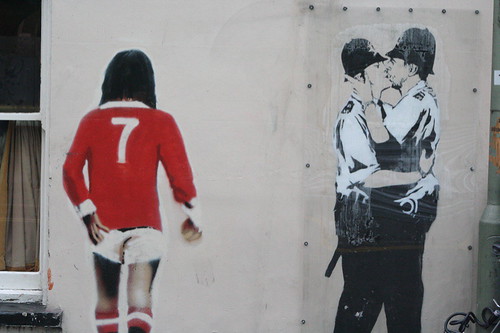Many of the The Beatles song lyrics are surreal or at least they seem so to the uninitiated. Attempting to decipher them seems to require a mix of pop culture, exotica and a broadminded approach to drug culture. One example is the great song Come Together from the album Abbey Road (1969). The tag-line Come together right now over me is really well known and appreciated but the rest is almost impenetrable.
He roller-coaster he got early warning
He got muddy water he one mojo filter
He say “One and one and one is three”
Got to be good-looking ’cause he’s so hard to see
Come together right now over me
Besides all possible, and impossible, interpretations one of the main themes in the song is the West African magic in particular the references to things like juju & mojo.
The mojo is a recurrent theme in music, in particular, blues music (Wikipedia has a list of references) its a magic charm carried under the clothes. Looking on the mojo as an outsider there is often a lack of understanding for the role it plays. Indeed often those relying on the mojo are seen as being superstitious.
Even in cultures where this occurs the talisman or amulet is commonplace. It is very difficult to precisely define what the talismans may, or may not, be as they can be different things to different peoples at different times. The main idea is that the talisman is there to protect the bearer. Again, to the non-believer this is simply superstition. However, many of those who argue this are prepared to wear a cross or other religious artifact every day.
In the secular society there is a tendency to look upon even religious symbols as being part of a superstitious infrastructure – they are more than unnecessary they actually limit the believing bearer from developing into an independent figure.
Whether you believe this or not is unimportant but I do find it interesting to see the way in which people behave when they are deprived of the technology. I don’t mean only the fact that they cannot use the technology I mean the way in which they behave when they have (inadvertently) misplaced or forgotten their technological artifacts.
If we ignore the functionality. How different is the insecurity and nervousness of a person deprived of his mojo to the feelings of a man deprived of his mobile phone? Does this mean that mass market technology has taken the place served by the good luck charms of our ancestors? Does a Nokia ward of evil spirits? Is male sexuality somehow connected to the contents of ones laptop?






